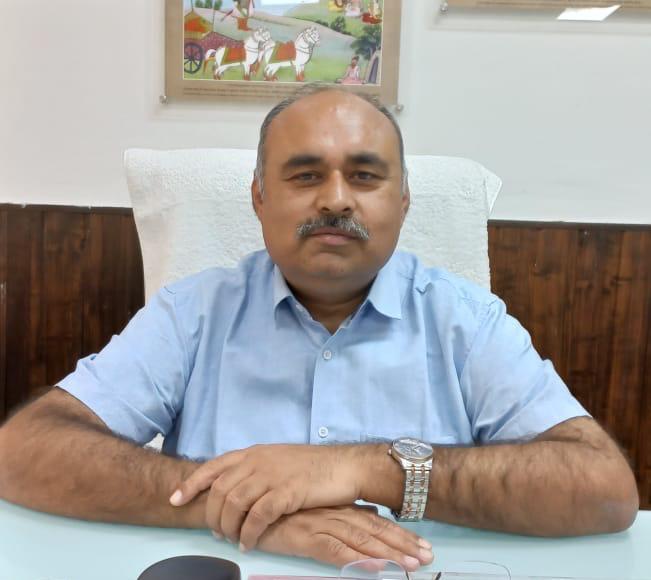news details |
|
|
| One Nation, One Election: A revolutionary step towards efficient democracy | | |  Madan Mohan Chhabra Madan Mohan Chhabra
State Co-Convenor, One Nation–One Election Committee
India today stands at the threshold of a new era — an era of rapid economic transformation, technological progress, and global leadership. Under the visionary leadership of Prime Minister Narendra Modi, the nation has set its sights on becoming a Viksit Bharat (Developed India) by 2047. Yet, as India accelerates toward this goal, one major structural obstacle continues to impede progress — the endless cycle of elections.
To remove this roadblock, Prime Minister Modi has put forward the visionary idea of One Nation, One Election — a reform that has the potential to revolutionize Indian democracy, strengthen governance, and channel the nation’s resources toward development rather than constant political mobilization.
This proposal is not merely an administrative adjustment; it is a reform in national interest. It calls for a shift from politics of perpetual campaigning to politics of performance and governance. By decoupling governance from continuous electoral disruptions, India can restore policy stability, economic focus, and administrative efficiency.
A Look Back: When India Voted as One
The concept of simultaneous elections is not new to India. From 1951 to 1967, both Lok Sabha and State Assembly elections were conducted together. This synchronization ensured governance continuity and minimized administrative strain.
The first general election of 1951–52 marked the beginning of this practice, which continued successfully through the 1957, 1962, and 1967 polls. However, the system began to unravel in the late 1960s when several State Assemblies were dissolved prematurely in 1968–69, followed by the early dissolution of the fourth Lok Sabha in 1970. This brought an end to the era of simultaneous elections.
The Congress Party, which dominated Indian politics at the time, played a direct role — both intentionally and circumstantially — in breaking this system. Political instability, power struggles, and dismissals of opposition-led state governments contributed to the disintegration of the unified electoral schedule. The result was a fragmented and staggered electoral process, which has since become the norm.
Today, India finds itself perpetually in election mode — Lok Sabha elections every five years, and State Assembly elections at varying intervals across the calendar. This continuous electoral churn diverts the focus of political parties, the bureaucracy, and the administration from long-term governance to short-term political gain.
The Price of Perpetual Polls
Frequent elections have far-reaching implications. They drain the national exchequer, paralyze governance, and consume administrative bandwidth that should otherwise be used for public service delivery.
Each election requires massive logistical arrangements — thousands of crores of rupees, deployment of lakhs of government employees, and large-scale diversion of police and security forces. Repeated imposition of the Model Code of Conduct further delays policymaking and implementation, affecting developmental projects and welfare schemes.
For the poor, backward classes, and marginalized sections, this delay can mean the difference between progress and continued deprivation. Welfare schemes often remain stuck in limbo for months, as the government is bound by the election code.
Moreover, the constant political climate of campaigning fuels polarization, stalling consensus on national issues. The energy of political leadership is consumed in electoral arithmetic rather than visionary policymaking.
Restoring the Lost Balance
The One Nation, One Election proposal seeks to restore the governance balance that India once enjoyed. Recently, under the chairmanship of Union Agriculture Minister and National Convenor Shri Shivraj Singh Chouhan, a comprehensive roadmap was drawn to take the idea to the masses.
Public awareness campaigns, seminars, and youth-centric programs in universities and colleges — particularly in states like Haryana — are being launched to educate citizens on the benefits of synchronized elections. The youth, as the driving force of modern India, must understand that frequent elections are not just a political issue — they are a developmental bottleneck.
Why One Nation, One Election Makes Sense
1. Continuity in Governance
When elections take place across different states at different times, the focus of governments and political leaders inevitably shifts from governance to campaigning. Simultaneous elections will restore stability and ensure that governments at both Central and State levels can work in harmony toward long-term national goals.
2. Swift Policy Implementation
Under the current system, the Model Code of Conduct is imposed multiple times across the year, stalling critical decisions. With synchronized elections, such administrative interruptions would occur only once in five years, ensuring continuity in welfare and development programs.
3. Optimal Use of Resources
Currently, millions of government employees — from district officers to school teachers — are pulled from their regular duties for election work. Conducting all elections together would prevent this repeated diversion of human resources, allowing institutions to function efficiently throughout the year.
4. Strengthening Regional Voices
Critics argue that simultaneous elections might dilute regional concerns, but the opposite is true. It creates a level playing field where regional parties can focus on local issues without being overshadowed by national campaigns happening at different times. It ensures that both national and regional narratives find their rightful space within one democratic exercise.
5. Expanding Political Opportunities
Simultaneous elections open up more democratic participation within parties. Instead of a few dominant leaders managing multiple electoral campaigns, opportunities can be distributed among a broader base of party workers, fostering inclusiveness and leadership diversity.
6. Governance Over Politics
Perpetual campaigning distracts policymakers from governance. A single, synchronized election cycle would allow leaders to devote more time to administration, welfare, and long-term planning — instead of year-round political maneuvering.
7. Reduced Financial Burden
India spends enormous sums on conducting separate elections. According to various estimates, the 2019 Lok Sabha elections alone cost over ₹60,000 crore. When State elections are added, the figure multiplies. Simultaneous elections would drastically reduce this expenditure, freeing up funds for public welfare, education, healthcare, and infrastructure — areas that directly impact citizens’ lives.
A Reform in the Spirit of the Constitution
Dr. B.R. Ambedkar’s vision of Indian democracy was based on stability, accountability, and efficiency. The One Nation, One Election reform embodies this spirit by aligning democratic processes with national priorities. It strengthens institutions rather than weakening them — a goal that should unite all political parties beyond ideological divides.
Unfortunately, some opposition parties, for narrow political reasons, have chosen to criticize the initiative and question its feasibility. But history and logic are not on their side. India successfully conducted simultaneous elections for nearly two decades after independence. What worked then can certainly be made workable again with the right political will and legal framework.
Conclusion: A Call for Political Maturity
The One Nation, One Election initiative represents more than just electoral reform — it is a step toward political maturity and national efficiency. It offers India an opportunity to align its democratic practices with its developmental aspirations.
If implemented with consensus, transparency, and constitutional safeguards, this reform can transform India’s democratic landscape — freeing it from the burden of constant political churn and enabling it to focus on its destiny: becoming a Viksit Bharat by 2047.
Prime Minister Modi’s call for One Nation, One Election is, in essence, a call for unity — unity of purpose, policy, and progress. The time has come for all political stakeholders to rise above partisan interests and embrace this vision for the greater good of the nation. |
|
|
|
|
|
|
|
|
|
|
|
|
| |
| |
|
|
|
|
 |
|
|
